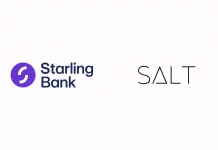The fanfare behind the dropping of the Canadian $1000 note and launch of the new $10 bill pales in comparison to the changing times that are in the offing within the Canadian economy.
It’s soon going to be paperless, digital payment-based financial system that’ll sweep change the country like never before.
Research shows that Canadians are all set to absorb the change, in fact, the Maple leaf needs all but a slight flip, to turn over to become one of the newest members of the world’s cashless society.
The Government is fast implementing and calibrating the systems and infrastructure to adapt and change into the new format, where it will bid goodbye to cheques and cash transactions and say hello to e-payments all across the nation.
Interestingly, the survey also pointed out that 66% of the population were willing to forego cheques, but the percentage ready to drop cash transactions fell to 50%. The figures may change as the system gets underway, it is felt.
The concept of e-wallets and other modes of transactions have been generally accepted for their convenience, but only 15% of the respondents actually said they are aware of how the system works or adapted to the same.
On another scale, 50% of the respondents were ‘somewhat to very anxious’ about the arrival of e-wallets and only slightly more than 27% actually utilised the mobile banking facility to deposit cheques using their smart phone camera. However, among those who migrated to the facility, satisfaction rate was rated as high as 97%!
41% showed that they made routine shopping with personal credit card details stored in their mobile apps or at an e-commerce site. Security consciousness was at ease for 90% of the respondents in these cases.
Speaking on the cardinal change of the financial system in the country, the Chief Executive of Payments Canada states, “As we modernize the Canadian payments system, it is important to regularly take the pulse on the attitudes and behaviours of Canadians … this data demonstrates a natural ambivalence around emerging technological advancements in payments but endorsement from early adopters, which often signifies a tipping point. This is an important insight for Payments Canada and our financial institution participants as we collaborate on the future of Canadian payments.”
With the infrastructure and system fine-tuning in place, Canada’s financial institutions and payment service providers will have a modern, fast and data-rich network to streamline the payments for goods and services and to transfer money by Canadians within their home ground and abroad.









